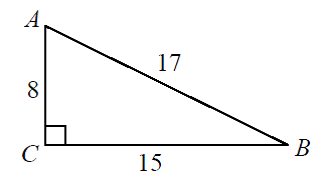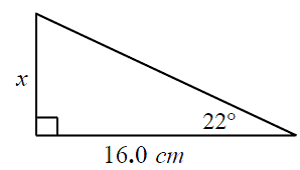Free to Join!
Easily See Your Progress
 We track the progress you've made on a topic so you know what you've done. From the course view you can easily see what topics have what and the progress you've made on them. Fill the rings to completely master that section or mouse over the icon to see more details.
We track the progress you've made on a topic so you know what you've done. From the course view you can easily see what topics have what and the progress you've made on them. Fill the rings to completely master that section or mouse over the icon to see more details.Make Use of Our Learning Aids
Earn Achievements as You Learn
 Make the most of your time as you use StudyPug to help you achieve your goals. Earn fun little badges the more you watch, practice, and use our service.
Make the most of your time as you use StudyPug to help you achieve your goals. Earn fun little badges the more you watch, practice, and use our service.Create and Customize Your Avatar
 Play with our fun little avatar builder to create and customize your own avatar on StudyPug. Choose your face, eye colour, hair colour and style, and background. Unlock more options the more you use StudyPug.
Play with our fun little avatar builder to create and customize your own avatar on StudyPug. Choose your face, eye colour, hair colour and style, and background. Unlock more options the more you use StudyPug.
Introduction to the Tangent Ratio in Trigonometry
The tangent ratio is a fundamental concept in trigonometric function, essential for solving problems involving right-angled triangles. Our introduction video provides a comprehensive overview of this important trigonometric function, serving as a crucial starting point for students delving into more advanced mathematical concepts. The tangent ratio, often abbreviated as tan, is specifically defined as the ratio of the length of the opposite side to the length of the adjacent side in a right-angled triangle. This ratio is particularly useful when working with angles and distances in various real-world applications, such as engineering, physics, and navigation. Understanding the tangent ratio allows students to calculate unknown sides or angles in right-angled triangles, making it an indispensable tool in trigonometry. As we explore this concept further, we'll see how the tangent ratio relates to other trigonometric functions and its practical applications in solving complex problems.
Find angle A and B:

Step 1: Understand the Problem
The problem requires us to use the tangent ratio to find the angles in a right triangle. The tangent ratio is defined as the ratio of the length of the opposite side to the length of the adjacent side (Tan = opposite / adjacent). We are given all three sides of the triangle, and we need to find angles A and B.
Step 2: Identify the Sides
First, identify the sides of the triangle relative to the angle you are solving for. The hypotenuse is the longest side and is opposite the right angle. For angle A, the side opposite to it is labeled as the opposite side, and the side adjacent to it is labeled as the adjacent side.
Step 3: Set Up the Tangent Ratio for Angle A
To find angle A, use the tangent ratio:
tan(A) = opposite / adjacent
Substitute the given side lengths into the equation. For angle A, the opposite side is 15, and the adjacent side is 8:
tan(A) = 15 / 8
Step 4: Solve for Angle A
To find the measure of angle A, use the inverse tangent function (also known as arctangent):
A = arctan(15 / 8)
Use a calculator to find the value of A. Ensure you input the fraction directly into the arctangent function to avoid rounding errors. This will give you the most accurate result.
Step 5: Set Up the Tangent Ratio for Angle B
To find angle B, you could use the tangent ratio again. However, since we already know angle A and the right angle (90 degrees), we can use the fact that the sum of angles in a triangle is 180 degrees:
B = 180 - 90 - A
Substitute the value of angle A into the equation to find angle B.
Step 6: Verify Your Results
After calculating both angles, verify that the sum of angles A, B, and the right angle (90 degrees) equals 180 degrees. This ensures that your calculations are correct.
Here are some frequently asked questions about the tangent ratio:
What is the formula for the tangent ratio?
The tangent ratio is defined as the ratio of the opposite side to the adjacent side in a right triangle. The formula is: tan(θ) = opposite / adjacent, where θ is the angle in question.
How do you calculate tangent?
To calculate tangent, identify the opposite and adjacent sides relative to the angle in question in a right triangle. Then, divide the length of the opposite side by the length of the adjacent side. You can also use a scientific calculator's tan function for direct calculation.
What are some real-life applications of the tangent ratio?
The tangent ratio is used in various fields, including construction (calculating roof slopes), navigation (determining distances and bearings), astronomy (measuring celestial angles), and engineering (designing ramps and inclines).
How is the tangent ratio related to sine and cosine?
The tangent ratio is related to sine and cosine through the identity: tan(θ) = sin(θ) / cos(θ). This relationship demonstrates how these trigonometric functions are interconnected.
When should I use the tangent ratio instead of sine or cosine?
Use the tangent ratio when you know the opposite and adjacent sides of a right triangle and need to find the angle, or when you know an angle and either the opposite or adjacent side and need to find the other. It's particularly useful for problems involving slopes or gradients.
Understanding the tangent ratio to calculate angles and sides (Tan = o / a) is a crucial concept in trigonometry. However, to fully grasp this topic, it's essential to have a solid foundation in several prerequisite areas. These foundational concepts not only provide context but also enhance your ability to apply the tangent ratio effectively.
One of the fundamental prerequisites is the knowledge of unit circle. The unit circle serves as a visual representation of trigonometric functions and their relationships. It helps in understanding how the tangent ratio relates to angles and sides in a right triangle, which is crucial when using the tangent function.
Another important concept to master is the cosine ratio. While the tangent ratio focuses on the opposite and adjacent sides, the cosine ratio deals with the adjacent side and hypotenuse. Understanding both ratios provides a comprehensive view of trigonometric relationships in right triangles.
For a deeper understanding of the tangent function, it's beneficial to explore inverse tangent function. This concept helps in solving equations involving tangent and provides insight into the relationship between angles and ratios.
When applying the tangent ratio to real-world problems, knowledge of angle of elevation becomes particularly useful. This concept is often used in practical applications, such as determining heights of buildings or distances to objects, using the tangent ratio.
For those advancing to higher-level mathematics, understanding the derivative of inverse trigonometric functions becomes relevant. While not directly related to basic tangent ratio calculations, this knowledge provides a bridge to calculus and advanced trigonometric concepts.
By mastering these prerequisite topics, students can approach the tangent ratio with a well-rounded understanding. This foundation not only aids in solving problems more effectively but also in appreciating the interconnectedness of trigonometric concepts. Each prerequisite topic contributes to a deeper comprehension of how the tangent ratio works and its applications in various mathematical and real-world scenarios.
Remember, trigonometry is a subject where concepts build upon each other. Taking the time to thoroughly understand these prerequisite topics will significantly enhance your ability to work with the tangent ratio and other advanced trigonometric concepts. It's not just about memorizing formulas, but about understanding the underlying principles that make these mathematical relationships work.





